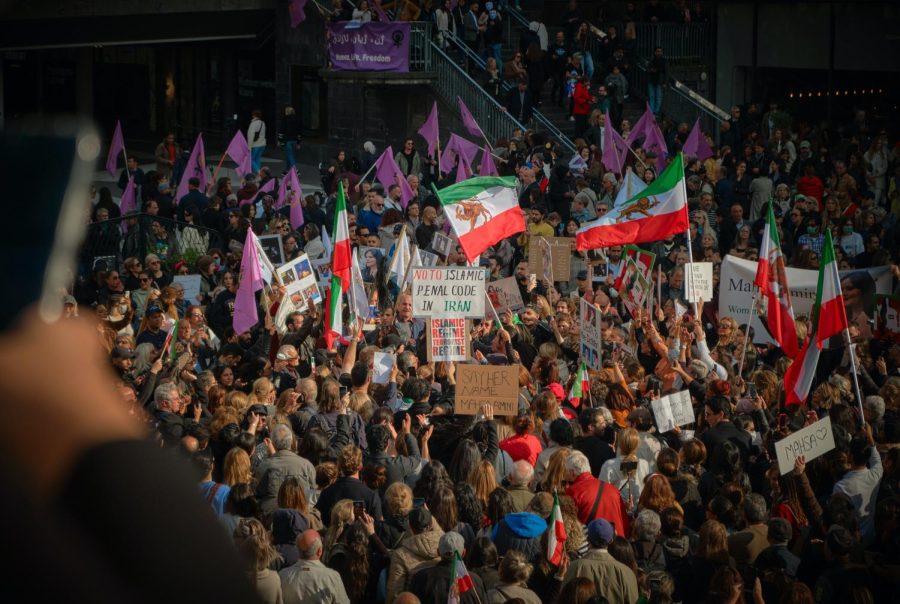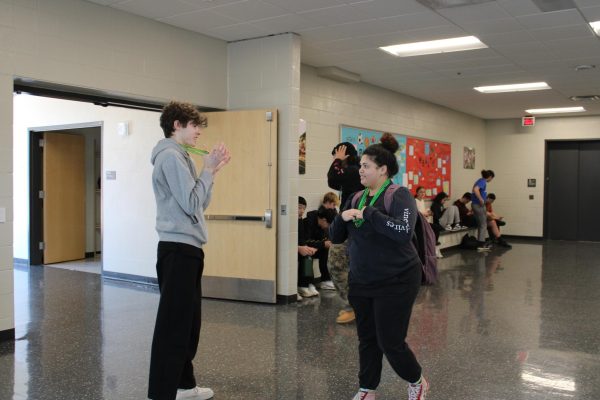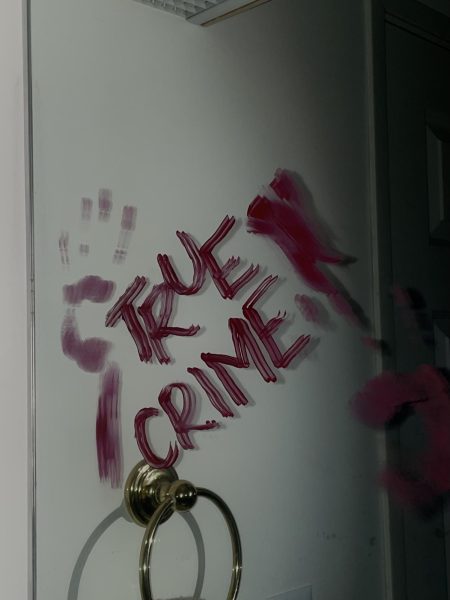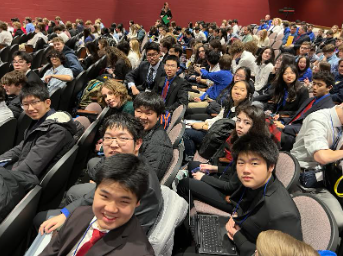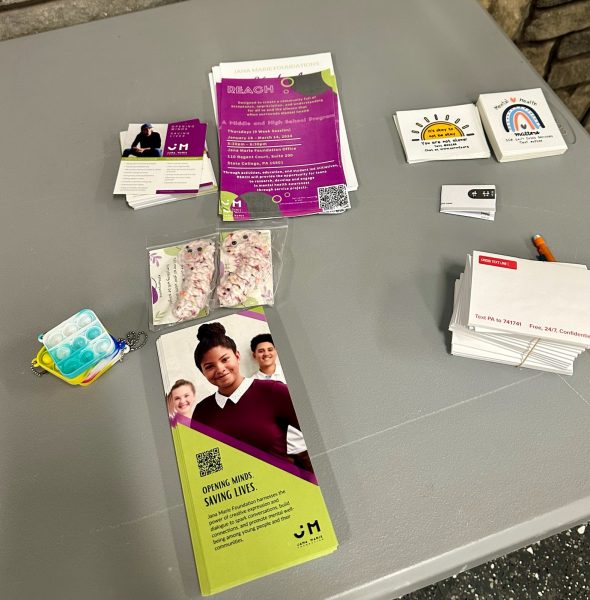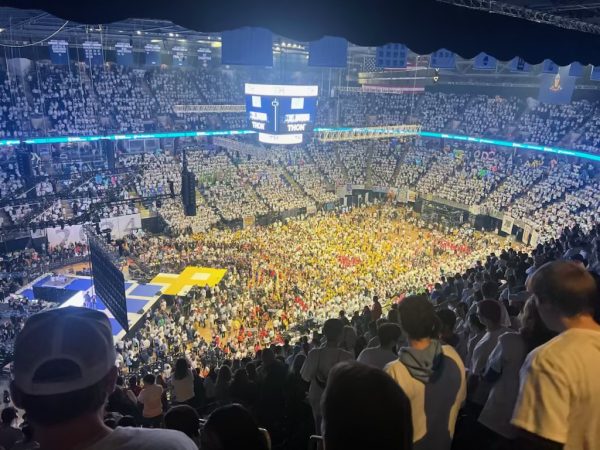“Women, Life, Freedom,” Protests Against Iran’s Violations of Women’s Rights
A protest that occurred in Stockholm, Sweden, taken on Sept. 24th Photo by Artin Bakhan on Unsplash.
October 29, 2022
On Sept.13, 2022, 22-year-old Iranian Mahsa Amini was detained at a train station in Tehran. Amini was traveling to visit her brother who lives in Tehran. According to the morality police, she was detained because she was wearing her hijab “incorrectly”. The morality police quickly transported her to a detention center, where she was to be “educated” on the strict hijab law that was put into effect after the Iranian Revolution in 1981.
Three days later, on Sept. 16, Amini was in a coma and was pronounced dead hours later. The government proclaimed that she died from a heart attack, although she never had an existing heart condition. CT Scans taken after her death highlighted signs of fractures in the skull, hemorrhages, and other major brain injuries, painting a much different picture of what occurred in the detention center than what the government claimed happened.
Senior Mia High is part Iranian and was completely outraged when they found out about Amini’s death.
“I was really disgusted. It was a pain to my heart and to my soul. I sympathize [with the Iranians]. It was just a general feeling of disgust,” High exclaimed. “The government is very inhuman and corrupt in Iran. They are dehumanizing the women of Iran right, and it is unacceptable.”
On the day of Amini’s funeral, Sept. 17th, the first of the protests arose in Amini’s hometown and spread to Tehran. The demonstrations included protesters burning their hijabs and attacking symbols of the regime. As news spread about Amini’s death, outrage followed. Protests quickly spread from cities in Iran to cities around the world, including LA, Washington DC, and Paris.
“The protests are warranted, in full. It is so good that people are protesting, making this a global voice, and standing for the women of Iran. It’s become worldwide because of the use of social media, and the media,” High said, “It’s a fun power Gen-Z has, to spread and to globalize ourselves in support of an effort. We are a much more welcoming generation and a global generation. The globalization aspect really helped pull the world together to protest this.”
Although in different locations of the globe, each protest chanted, “Women, Life, Freedom”, along with women burning their hijabs and or cutting their hair as a way to symbolize their anger and displeasure against the cruel regime that currently exists in Iran.
Although the current protests are in response to the mistreatment of Amini, the Iranian Republic was already balancing on a thin line between public riots and a “stable” government system.
Since the Iranian Republic was created, it has been violating basic women’s rights and treating them as second-class citizens. Iran regularly persecutes and murders its people because they practiced their basic human rights and self-expression. Singing and dancing could get that person killed. Being openly a part of the LGBTQ+ community most definitely resulted in death.
Even in 2021, thousands of Irans were interrogated and unjustifiably persecuted for exercising their rights, many remain incarcerated today. Bans were placed on abortions and basic reproductive health resources. Yet, the legislation continued to undermine issues like freedom of religion, access to basic health care, and access to the internet.
“The media being blocked; the news, the social media, the internet being blocked is a violation- I believe- of the women’s and people of Iran’s human rights,” High explained.
They then further explained just how important having access to the media is.
“ I think everyone has the right to communicate and they should be able to stand together to ask for help and to communicate with outside sources. It is very reminiscent of past historical events that have happened where people [and] groups of people have been closed off. It resembles a lot of genocid[al] events that have happened in the past.”
The oppression in Iran was made much worse when the current President, Ebrahim Raisi, came into power in August of 2021. Raisi quickly reviewed and reformed the laws about using the hijab in public places. These reformed laws included the installation of surveillance cameras to monitor and fine unveiled women and refer them for “counseling”. Seminary students are placed in residential buildings to monitor how occupants dress in communal areas. Hospital staff are required to provide “appropriate garments” to female patients. Fines are given to any individual who allows access to “vulgar dresses”. There is now a mandatory prison sentence for any Iranian who questions or posts content online against the Hijab Law.
“Iran needs to fix its corrupt government and be a government that works for the people, not against the people,” High proclaimed, expressing how horrible they feel about the government’s actions.
As of Sept. 21, the Iranian Government has officially limited Iranian’s access to Instagram and Whatsapp. Along with that, there have been over 200 deaths since the first protest began, with children included among the victims. Hundreds more people are injured. These injuries were caused by the harsh instruments that Iranian police are using against the protesters, including batons, tear gas, water cannons, and the firing of projectiles.
“It’s disgusting, I think it is mainly attributed to the government working against the people in Iran and working to actively pursue its own inhuman beliefs, and work on a very rigid system,” High expressed passionately.
The goal of the protests is to break down the oppressive regime that currently exists in Iran, along with redeeming justice for Mahsa Amini. What started as a fight for justice has expanded into something greater; people are no longer just fighting for basic women’s rights, but also a battle for freedom and democracy.
Even though the protests and the events occurring in Iran are thousands of miles away from State High, High described the best ways for students to join the fight.
“State High students- individually, or in small groups- we can work to fundraise, to send money to nonprofits that are directly helping with the efforts in Iran,” High explained, “We can use our communicative powers for social media and communication to spread awareness, to get other people involved and educated and to further raise awareness and raise funds for people directly impacted, and for anti-Iranian government movements.”
Other ways for students to join the fight, or spread awareness include calling representatives, joining protests located near you, signing petitions, making donations, or simply following Iranian activists are all great ways to get involved. Students can find more information here.
The protests that began because of the brutal treatment of Masha Amini are giving Iranians a chance for a better future, where women are treated the same as men, where they can practice free religion and have the freedom to choose what they wear. After all, it is a fight for women, life, and freedom.

